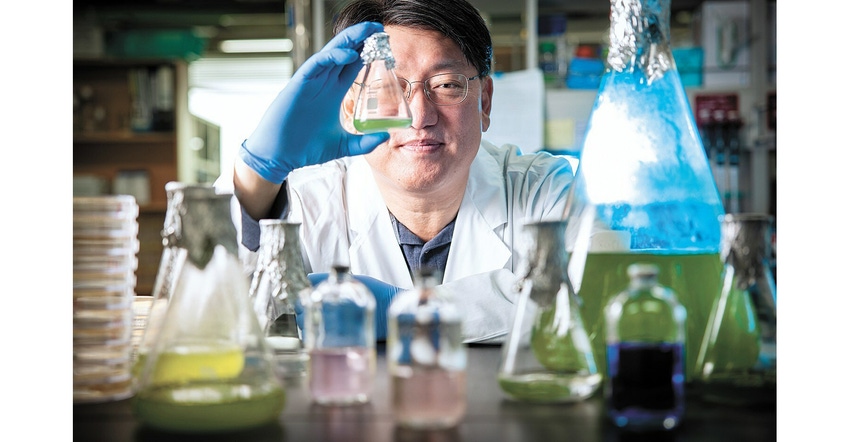Lithium Extraction with Microalgae: A Green Battery Recycling Method
Green Mineral's Jung Kwang-Hwan says microalgae offers an affordable and eco-friendly solution for lithium-ion battery recycling.
July 19, 2023

With the rise in demand for electric vehicles, new challenges have emerged. Particularly, proper disposal of used batteries, which poses a severe environmental threat. While recycling heavy metals like lithium, cobalt, manganese, nickel, and others found in batteries is the preferred approach, the extraction process often leads to environmental pollution. Currently, the lack of advanced technology makes recycling more expensive than disposal.
However, one company has successfully tackled this formidable challenge. Green Mineral Inc. has pioneered a groundbreaking technology that harnesses the power of microalgae to extract lithium from used batteries, marking a significant global milestone. Jung Kwang-Hwan of Green Mineral was interviewed at his research lab in Sogang University, Mapo-gu, Seoul, last month. Jung emphasized, “In contrast to conventional chemical methods that rely on organic solvents for battery recycling, our environmentally friendly approach provides ecological benefits while also being economically viable.” He described this as a “paradigm shift in the realm of used battery recycling.”
As a professor in the Department of Life Sciences at Sogang University, Jung initially conducted research on using microalgae to eliminate substances emitting radiation. Over a decade ago, he made a significant discovery regarding the applicability of this technology for extracting lithium from used batteries.
Converting lithium ions to carbonates
His attention was drawn to the presence of Chlorella, a type of microalgae. Chlorella, renowned as a functional food, possesses the unique ability to convert metal ions such as lithium into carbonates. “It operates on a principle similar to the process of shellfishes creating shells,” Jung explained. “When calcium enters the cell membrane of shellfish and reacts with carbon dioxide, it undergoes a transformation into calcium carbonate, which solidifies and releases. Likewise, Chlorella exhibits a similar reaction with lithium, leading to biomineralization, where cells form minerals.”
The most significant benefit of Chlorella is its environmentally friendly nature. The typical method of recycling used batteries involves a chemical treatment, by processing a black powder to extract metals such as cobalt, nickel, manganese, etc. The wastewater, dissolved in sulfuric acid and other substances, lacks a feasible recycling method and is mostly disposed of. Recycling batteries incurs higher costs compared to discarding them. However, by utilizing Chlorella, lithium can even be extracted from wastewater. Additionally, Chlorella absorbs carbon dioxide, contributing to carbon neutrality.
Jung embarked on a global journey to procure Chlorella, he said. During this journey, he successfully developed a new strain of Chlorella through genetic manipulation, which exhibited improved metal extraction capabilities. His aim was to increase lithium production and enhance Chlorella cultivation in large quantities. Thanks to this, Green Mineral is now able to recover 20kg out of 28kg of lithium from used batteries in electric vehicles. The use of Chlorella for lithium extraction is cost-effective, as it is more affordable than organic solvents, making it an economically viable solution. It is acknowledged as the sole method for both economically and environmentally friendly extraction of lithium.
Green Mineral’s next steps
Green Mineral is currently in the process of filing patent applications in various countries, including Korea, the United States, the European Union, Japan, and China. The objective is to secure a market share of over 30% in the global recycled lithium market. Jung emphasized, “There seems to be a prejudice that being environmentally friendly lacks economic viability in business. However, a good technology should encompass both environmental sustainability and economic feasibility. That's the main principle of ESG. We aim to revive society, the environment, and business through eco-friendly battery recycling technology.”
About the Author(s)
You May Also Like





